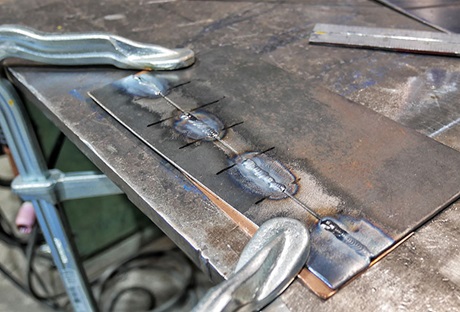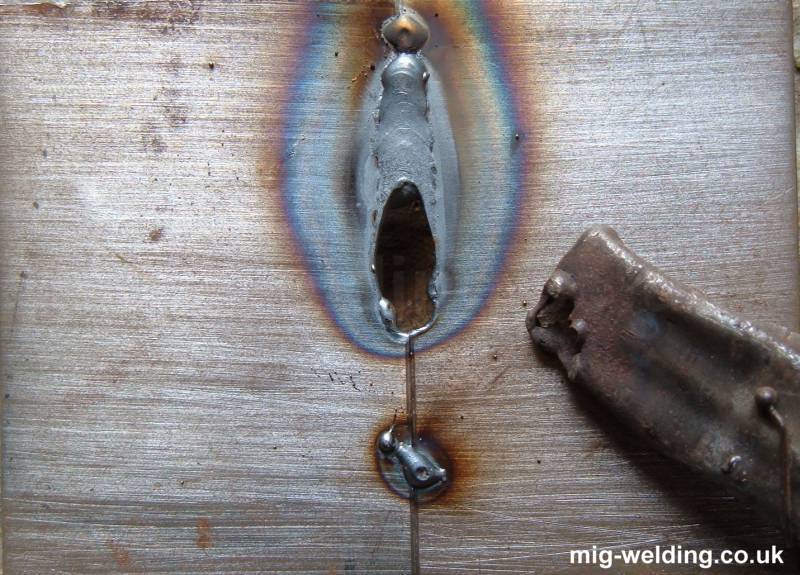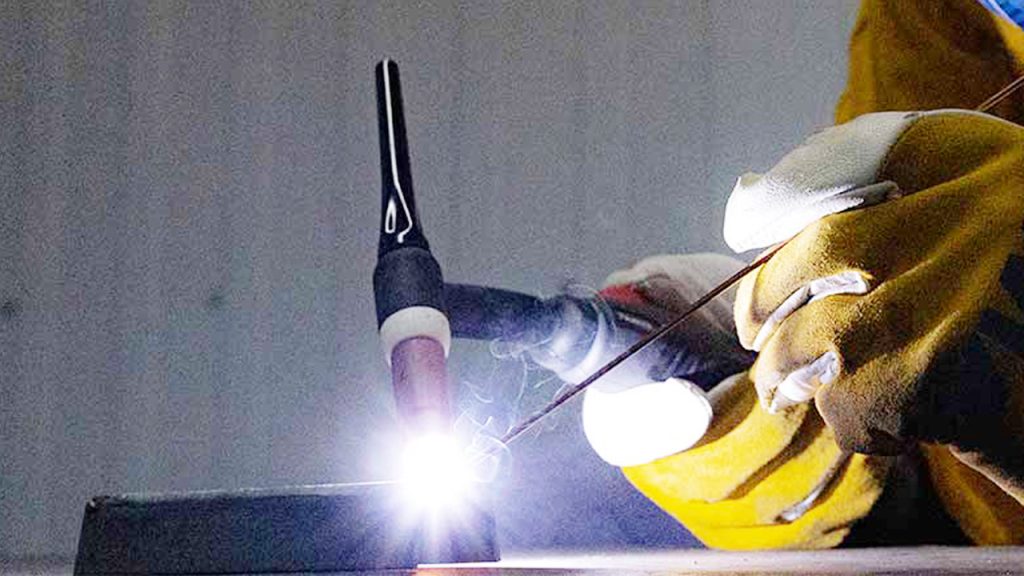Welding thin metal is a precise task. Choosing the right process is crucial for success.
Working with thin metal requires careful technique to avoid damage. Different welding methods offer various benefits and challenges. The best process ensures strong, clean welds without warping the material. Whether you’re a beginner or an experienced welder, understanding the best welding methods for thin metal is essential.
This blog post will guide you through the options available, helping you choose the most effective technique for your project. Let’s dive in to discover the best welding process for thin metal.

Credit: www.youtube.com
Introduction To Welding Thin Metal
Welding thin metal is like walking a tightrope; it requires precision, patience, and the right tools. Whether you’re working on a delicate art project or a crucial repair, mastering the technique of welding thin metal can make all the difference. Let’s dive into the nuts and bolts of this craft.
Challenges With Thin Metal
Thin metal, while versatile, brings a set of challenges that can test even the most experienced welders. The most common issues include:
- Burn-through: Thin metal can easily melt away if the heat is too high.
- Distortion: The metal can warp and twist when exposed to excessive heat.
- Weak joints: Poor technique can result in joints that are not strong enough.
Imagine trying to bake a delicate pastry at a high temperature – chances are, it’ll burn. Similarly, thin metal requires a careful approach to avoid these pitfalls.
Importance Of Choosing The Right Process
Choosing the right welding process is like picking the right tool for the job. Not all processes are created equal, and using the wrong one can lead to frustration and failure. Here’s why the right choice matters:
- Precision: The correct process allows for more control, reducing the risk of burn-through and distortion.
- Efficiency: It saves time and materials, making your project more cost-effective.
- Quality: Ensures a strong, reliable weld that can withstand stress and strain.
Think of it like cooking – you wouldn’t use a sledgehammer to crack an egg, right? The same principle applies here. Using the right welding process ensures your thin metal project is a success from start to finish.
Tig Welding For Thin Metal
TIG welding, also known as Tungsten Inert Gas welding, is a popular method for welding thin metal. Its precision and control make it ideal for delicate work. Many welders prefer TIG welding for thin metal because it produces clean and high-quality welds.
Advantages Of Tig Welding
TIG welding offers several advantages for thin metal welding. One key benefit is its precision. Welders can control the heat and arc length accurately, reducing the risk of burning through the metal.
Another advantage is the quality of the welds. TIG welding produces smooth and clean welds with minimal spatter. This results in a more aesthetically pleasing finish.
TIG welding is also versatile. It works well with various metals, including aluminum, stainless steel, and copper. This makes it a flexible option for many projects.
Techniques For Effective Tig Welding
Effective TIG welding requires proper techniques. First, use a lower amperage setting. This helps prevent overheating the thin metal.
Next, maintain a short arc length. Keeping the tungsten close to the workpiece increases control and reduces heat input.
Proper filler rod selection is also crucial. Use a filler rod that matches the base metal to ensure strong welds.
Lastly, practice steady hand movements. Consistent speed and motion produce uniform weld beads, enhancing the weld quality.
Mig Welding For Thin Metal
MIG welding is an excellent process for working with thin metal. It provides precision and control, making it ideal for delicate tasks. This method uses a continuous wire feed, which melts and fuses the metal pieces together. Let’s explore why MIG welding is great for thin metal and some tips for using it effectively.
Benefits Of Mig Welding
MIG welding offers several benefits for thin metal projects. Firstly, it is easy to learn and use. The process allows for better control, reducing the risk of burning through the metal. Additionally, MIG welding is fast, increasing productivity. It also produces clean welds with minimal spatter, saving time on cleanup. Finally, it works well with various metals, including aluminum and stainless steel.
Tips For Mig Welding Thin Metal
To get the best results with MIG welding thin metal, follow these tips. Use a low voltage setting to prevent burning through the metal. Keep the torch angle at around 15 degrees for better control. Also, maintain a short arc length to focus the heat on the joint. Use a small diameter wire, like 0.6mm, for more precise welds. Finally, practice on scrap pieces to fine-tune your technique.
Spot Welding For Thin Metal
Working with thin metal can be tricky. One wrong move and you can end up with a mess. That’s where spot welding comes in. Spot welding is a technique that’s perfect for thin metals. It’s quick, efficient, and gets the job done without much fuss. Let’s dive into the details and explore how spot welding can be your best friend when working with thin metal.
When To Use Spot Welding
Spot welding is an excellent choice when you need to join thin sheets of metal. It’s commonly used in the automotive industry for assembling car bodies, but its applications are vast. Think of spot welding as your go-to method for small to medium-sized projects where you need strong, durable joints.
So, when should you use spot welding? Here are a few scenarios:
- Automotive repairs: Perfect for patching up thin metal parts.
- Home projects: Ideal for DIY tasks involving thin metal sheets.
- Small manufacturing: Great for creating small metal products quickly.
Spot welding is efficient, making it the right choice when time is of the essence. Plus, it’s easy to learn, so you don’t need to be a pro to get started.
Spot Welding Techniques
Spot welding involves clamping two pieces of metal between electrodes and applying an electric current. This heats the metal, causing it to melt and fuse together. Sounds simple, right? It is, but there are some techniques to ensure you get the best results.
- Clean the metal: Make sure the surfaces are clean and free of rust or paint. This ensures a strong weld.
- Set the correct pressure: Too much pressure can damage the metal, while too little can result in a weak weld.
- Control the heat: The current and time should be just right. Too much can burn through the metal, while too little won’t create a strong bond.
One trick is to practice on scrap metal first. This way, you can fine-tune your technique before working on your actual project. Remember, patience is key! The more you practice, the better your spot welding skills will become.
Whether you’re a hobbyist or a professional, spot welding offers a reliable way to work with thin metals. With a bit of practice and the right techniques, you can achieve strong, clean welds every time. So, grab your spot welder and get started on your next project!
Plasma Arc Welding For Thin Metal
Plasma Arc Welding (PAW) is a top choice when it comes to welding thin metal. It’s precise, efficient, and can produce high-quality welds. But what makes it ideal for thin metal? Let’s dive into the details and find out.
How Plasma Arc Welding Works
Plasma Arc Welding uses a plasma torch to create a concentrated arc. This arc melts the metal, allowing it to fuse together. Here’s a step-by-step look at how it works:
- Plasma Formation: The torch generates a plasma, a hot ionized gas.
- Arc Establishment: A high-frequency current starts the arc between the electrode and the workpiece.
- Welding Process: The plasma arc melts the metal at the joint, creating a strong weld.
Simple, right? This method ensures that the heat is concentrated and controlled, making it perfect for thin metals where too much heat can cause warping or burn-through.
Best Practices For Plasma Arc Welding
To get the best results from Plasma Arc Welding, follow these tips:
- Maintain Correct Torch Distance: Keep a consistent distance between the torch and the metal. Too close and you might burn through; too far and the weld won’t be strong.
- Use Proper Shielding Gas: Argon is commonly used. It protects the weld area from contamination.
- Control the Heat: Adjust the current to avoid overheating the metal. Thin metals need less current.
- Practice Steady Movements: Move the torch smoothly. Jerky movements can create weak spots in the weld.
Remember, practice makes perfect. Spend some time getting a feel for the process. It’s like learning to ride a bike; once you get the hang of it, you’ll be welding like a pro in no time.
| Tip | Explanation |
|---|---|
| Correct Torch Distance | Prevents burn-through or weak welds |
| Proper Shielding Gas | Protects from contamination |
| Heat Control | Avoids overheating thin metal |
| Steady Movements | Ensures strong, consistent welds |
So, why not give Plasma Arc Welding a try? It’s a fantastic method for thin metal, and with the right techniques, you can achieve stunning results. Happy welding!

Credit: www.millerwelds.com
Common Mistakes To Avoid
Welding thin metal can be tricky. It requires precision, the right tools, and a good understanding of the process. However, even seasoned welders can make mistakes. Let’s look at some common pitfalls to avoid when welding thin metal.
Overheating The Metal
One of the biggest mistakes when welding thin metal is overheating it. Too much heat can cause warping, burn-through, or even make the metal brittle.
Here are some tips to prevent overheating:
- Use a lower amperage setting: This helps control the heat input.
- Keep the torch moving: Don’t stay in one spot for too long.
- Use a heat sink: A copper or aluminum backing can absorb excess heat.
Overheating can be sneaky. You might not notice it until it’s too late. So, always be mindful of your heat settings and welding speed.
Incorrect Electrode Selection
Choosing the wrong electrode is another common mistake. The electrode you use can make or break your weld.
Here are some pointers for selecting the right electrode:
- Match the electrode to the metal type: Different metals require different electrodes.
- Consider the thickness: Thin metal needs a smaller diameter electrode.
- Check the manufacturer’s guidelines: Always refer to the recommendations for your welding machine and materials.
Using the wrong electrode can lead to poor weld quality, increased spatter, and even joint failure. So, take a moment to double-check your electrode choice before you start.
In summary, avoiding these common mistakes can make a big difference in your weld quality. By managing heat and choosing the right electrode, you’ll be well on your way to successful thin metal welding.
Expert Tips For Successful Welding
Welding thin metal can be tricky. Experts know that successful welding requires careful techniques. Here are some expert tips to help you achieve the best results.
Proper Metal Preparation
Start with clean metal surfaces. Remove any rust, paint, or dirt. Use a wire brush or grinder for this task. A clean surface ensures a strong weld. Thin metal can burn through easily. So, make sure the metal pieces fit well together.
Maintaining Consistent Speed
Consistency is key in welding. Move your welding torch at a steady speed. Too fast, and the weld may not hold. Too slow, and the metal could burn through. Practice helps you find the right pace. Keep your hand steady. This ensures an even weld.
Safety Precautions
Welding thin metal requires careful attention to safety. The process involves high temperatures and electrical currents. Without proper precautions, accidents can happen. Safety should always be a top priority. Below are key safety measures to follow.
Protective Gear
Wearing the right protective gear is essential. A welding helmet protects your eyes and face. Safety glasses shield your eyes from sparks. Use gloves to protect your hands from burns. A welding jacket covers your arms and body. Choose flame-resistant materials for added safety.
Safe Work Environment
A safe work environment reduces the risk of accidents. Ensure good ventilation to avoid inhaling fumes. Keep the work area clean and free of clutter. Use fire-resistant mats on the floor. Proper lighting helps you see clearly. Always have a fire extinguisher nearby. Check your equipment regularly for any damage.

Credit: www.mig-welding.co.uk
Frequently Asked Questions
What Is The Best Way To Weld Thin Metal?
Use a TIG welder for thin metal. Adjust settings for lower heat input. Maintain a steady hand and use filler rod sparingly. Employ short welds to prevent distortion.
Which Type Of Weld Is Used For Thin Metals?
TIG welding is commonly used for thin metals. It provides precision and control, ensuring clean and strong welds.
Is Tig Or Mig Better For Thin Metal?
TIG welding is better for thin metal. It offers precise control and cleaner welds, reducing the risk of burn-through.
What Is The Best Welding Electrode For Thin Metal?
The best welding electrode for thin metal is the E6013. It provides smooth welds and minimizes the risk of burn-through.
Conclusion
Choosing the best welding process for thin metal is crucial. The right method can save time and reduce costs. TIG welding and MIG welding are top choices. TIG offers precision, while MIG ensures speed. Both methods suit different needs. Consider material type and project requirements.
Always prioritize safety and proper technique. Ensuring a clean weld will enhance durability. Experiment with techniques to find the best fit. Your projects will benefit from the right choice. Happy welding!

